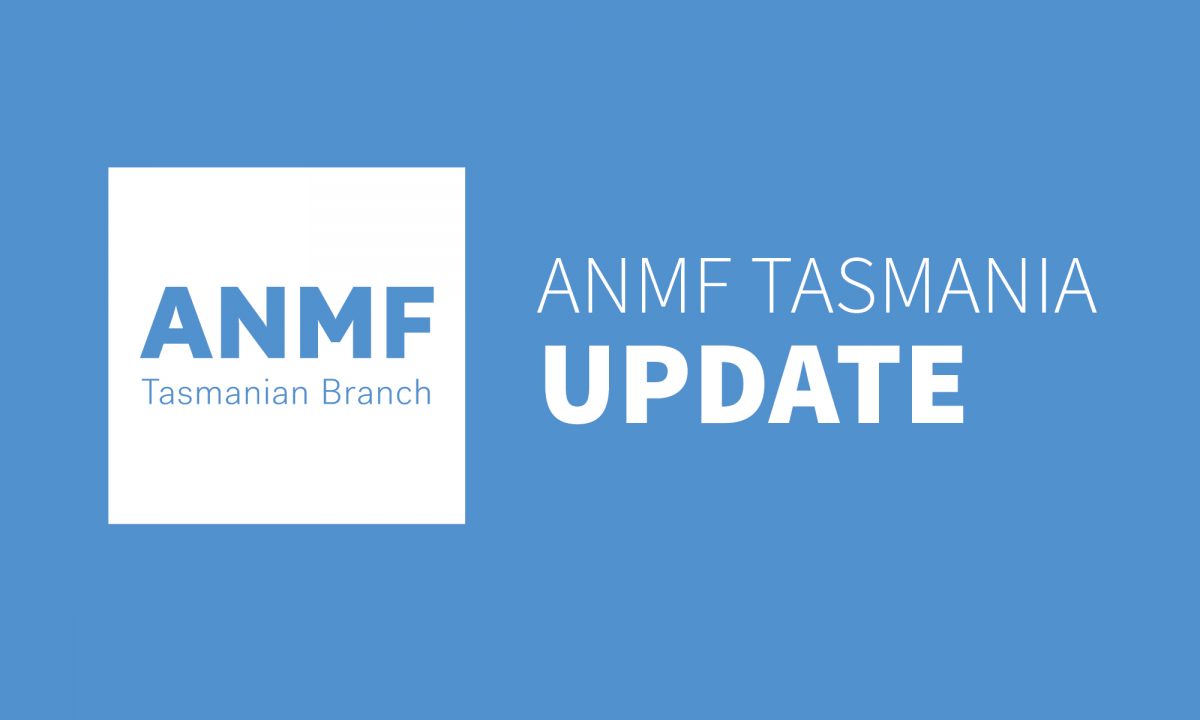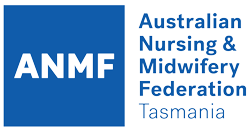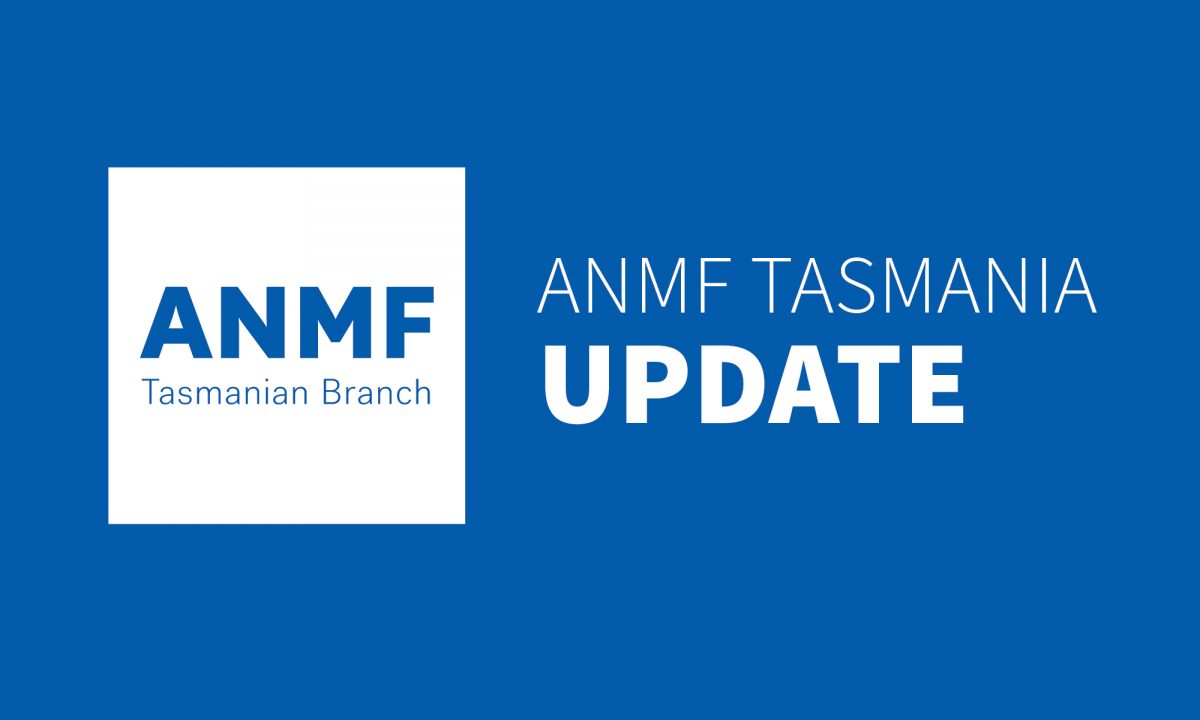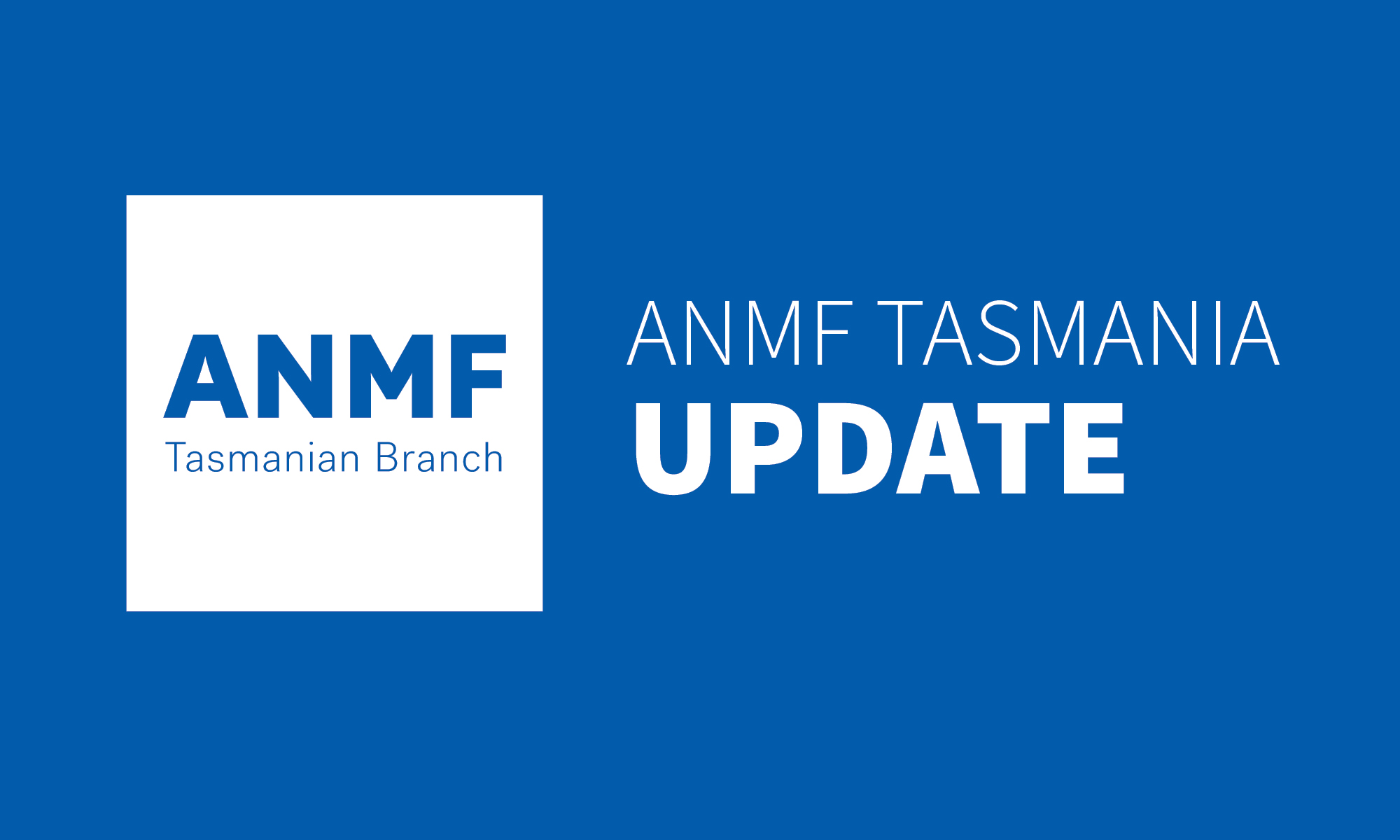
Tasmanian State Election: ANMF Key Asks
The ANMF Tasmanian branch is seeking formal commitment on Key Asks from political parties ahead of the Tasmanian State Election.
The following Key Asks are grounded in member feedback and evidence-based workforce and service delivery improvements:
- Ratios to be implemented and to be legislated
- Babies to be counted in midwifery staffing model
- Tasmanian Nurses & Midwives be paid the highest in the country
- ANUMs/AMUMs should be indirect
- Clinical Coaches should be indirect
- A commitment to fix hospital gridlock – resource transfer of care workload in ED
For openness and transparency, the ANMF are an apolitical professional organisation and we are seeking endorsement of all major parties. We will be publishing the commitments here from each major party to our Key Asks to advise our members of who has committed to invest in our profession.
Re: Election Commitment Request – Investing in Tasmania’s Nurses and Midwives
On behalf of the Australian Nursing and Midwifery Federation Tasmanian Branch (ANMF), representing over 8,000 nurses, midwives, and care workers across the state, I write to seek your party’s formal commitment to a comprehensive plan for workforce investment and service reform that will ensure sustainable, high-quality healthcare for all Tasmanians.
Our members are the backbone of Tasmania’s health system. They deliver essential care across acute hospitals, community health, and mental health settings. Yet, they continue to work in environments challenged by persistent understaffing, growing demand, and limited service capacity challenges that directly impact patient care and safety.
We respectfully seek your party’s endorsement and election commitment to the following priorities, which are grounded in member feedback and evidence-based workforce and service delivery improvements. For openness and transparency, the ANMF are an apolitical professional organisation, we are seeking endorsement of all major parties, and we will be publishing the commitments of each major party to our below asks on our social media and website to advise our members of who has committed to invest in their profession.
- Addressing Critical Staffing Needs in Nursing and Midwifery
Chronic underinvestment in Tasmania’s nursing and midwifery workforce has led to unsafe staffing levels across our health system. This has resulted in unprecedented rates of double shifts, unfilled vacancies, excessive overtime, and under resourced rosters. Our workforce is exhausted, burnt out, and increasingly leaving the profession or the state for jurisdictions offering better pay and more sustainable workloads. This level of understaffing is not just a workforce issue; it puts patient outcomes at risk.
A meaningful investment in Tasmanian nurses and midwives is urgently required to stabilise and rebuild our workforce. Recent recruitment efforts have welcomed an influx of graduate nurses and midwives. While these new professionals represent the future of the health system, retention will only be possible if there is adequate clinical support in every ward and unit. Clinical coaches are essential to ensure quality, safety, and development of the future workforce.
We call on all parties to commit to:
- Employ 100 clinical coaches in an indirect
- Convert Associate Nurse Unit Manager (ANUM)/Associate Midwife Unit Manager (AMUM) positions to indirect roles to enable these senior clinicians to work to their full scope, support care coordination, and assist the Nurse Unit Manager (NUM)/Midwifery Unit Manager (MUM) in clinical leadership, access, and flow. These roles were intended to be indirect when introduced, but are currently counted in direct care hours, limiting their effectiveness.
Community Nursing Expansion
To improve patient care and ease pressure on hospitals, significant investment in community nursing is critical.
We call for:
- Increasing access for Endorsed Privately Practicing Midwives to the hospital and a Publicly Funded Homebirth program in line with all other states.
- Expansion of the successful Northern community dementia service model into the South and North West
- Full funding of the proposed Nurse Practitioner (NP) led model of care on the West Coast to improve access and reduce reliance on major hospitals.
- Integration of NPs and Advanced Practice Nurses (APNs) into primary and preventive health care models.
- Embedding nurses in all schools.
- Recruitment and support for dedicated Aboriginal Health Liaison nurses and midwives to address health inequities.
- Allocate $500,000 to establish a NP Career Pathway to support leadership of multidisciplinary teams in dementia and community care.
- Fund specialised dementia training programs for community nursing teams.
Safe Workloads and Staffing Ratios
The current midwifery workload tool, Birthrate Plus, fails to reflect the realities of contemporary maternity care. Tasmanian midwives care for both mothers and babies postnatally, and this must be reflected in staffing models.
We seek immediate commitment to:
- Implement “Count the Babies” as part of midwifery staffing ratios.
Ratios were promised in the last Nurses and Midwives Agreement in 2023 and must be implemented within six months of forming government, with a clear transition from District Hospital models to enforceable ratios.
We also call for:
- Legislation to mandate minimum nurse-to-patient ratios, as in other states. Evidence shows this improves patient safety, reduces adverse events, and supports staff wellbeing — ultimately delivering cost savings through reduced complications, shorter hospital stays, and fewer readmissions.
- An additional 24/7 Clinical Nurse Consultant (CNC) on every mental health inpatient unit, to in reach into wards to safely manage patients under the Mental Health Act or experiencing significant delirium
Emergency and Transfer of Care Resourcing
With the Government’s new Transfer of Care protocol increasing demand on Emergency Departments (EDs), further investment is urgently required.
We urge immediate commitment to:
- Fund additional nursing staff to support transfer of care, flow in and out of EDs to meet the rising emergency demand
- Purchase necessary emergency equipment and expand clinical spaces to improve patient flow and reduce ramping.
- Recruitment and Retention of Nurses and Midwives
Tasmanian nurses and midwives currently are paid well below other states and territories with recently negotiated agreements having been agreed in other states and placing the workforce in this state so far behind. The implemented wages freeze of 2% to all public servants since 2014 has damaged real wages growth and has meant that our members have fallen well below that of their interstate counter parts, this places significant strain on recruitment and retention.
The recently implemented vacancy control committee in the Department of Health (DoH) has slowed down recruitment processes and been used to abolish what is considered by the Liberal government as non-essential. This committee needs to be abolished; any non-essential roles can be managed operationally and doesn’t need this scrutinized level of oversight.
- Fund real wages increase, to see Tasmanian nurses and midwives as the highest paid in the country. This will stabilise staffing and decrease reliance on unsafe practices of excessive overtime, double shifts, and shifts worked short.
- Introduce market allowance for hard-to-fill and persistently vacant positions, particularly in rural and regional areas and areas of specialised skill set i.e. EDs, Maternity Services etc. This will provide a circuit breaker in the current recruitment cycle that sees an over reliance in overtime, double shifts and agency and worse in shifts working short staffed.
- Attraction and retention allowance of $9000 (pro-rata) payable to nurses and midwives who stay working in Tasmania for two/three years.
- Abolish the vacancy control committee.
- Systemic review of current elongated approval processes for recruitment, with a front ended approval process to obtain required approvals prior to interview to enable a faster end phase recruitment process.
- Chief Nurse and Midwife to sit on the Health Executive to provide clinical oversight of the largest workforce in health.Executive Directors of Nursing (EDON) to report to Executive, alongside Chief Executives.
- Create and train more local nurse – Funding for a Northern Health Education and Research Centre Campus
Funding for a Health Education and Research Centre (HERC) – (established by the ANMF in 2013) Northern Campus, to expand operations into the North/North West of the state to respond to increasing demand for qualified nurses and care workers. Deliver the Diploma of Nursing and Cert 3 in individual support. Implement a robust mentorship program designed to facilitate smooth transitions into the workforce and enhance staff retention rates. Encourage a pathway for secondary students.
- Fund option 1: ($19.5M) Full funding for infrastructure, simulation lab and onsite student accommodation, programs statement.
- Impact: train over 1000 nurses and care workers annually
- Double diploma of nursing intake.
- Promote nursing as a career across all high schools and colleges.
- Onsite student accommodation.
- Fund option 2: ($12M) partial funding.
- Impact: establish strong training pipeline in Northern Tasmania.
- Support 50 Diploma of nursing graduates annually from the new campus.
- Improve workforce retention through structured mentorship.
- Fund option 3 ($8M) seed funding
- Impact: launch the northern campus with capacity for foundational cohorts.
- Enable incremental expansions as additional funding becomes available.
- Improving Access, Infrastructure and Care Coordination in Tasmania’s Health System
Tasmania’s hospitals are expected to deliver care 24/7, yet critical diagnostic and support services — including pathology, radiology, pharmacy, and allied health — are not available around the clock, causing delays in care and discharges. Additionally, the state lacks modern, integrated IT systems that connect hospital and community services, limiting efficiency and continuity of care.
The Kings Meadows Renal Unit is significantly under-resourced. Despite a $10 million federal funding commitment, only three new dialysis chairs are planned, this is insufficient given that 1 in 8 Tasmanians live with Chronic Kidney Disease (CKD). There is no on-site General Practitioner (GP), allied health or pharmacy, in the North and North West, and the absence of properly funded NP roles further limits patient care. Community transport issues and a six-year delay in redevelopment have exacerbated the crisis. Members are now prepared to take industrial action to demand urgent attention and the addition of six more dialysis beds.
We call for:
- Full statewide rollout of 24/7 access to pathology, radiology, pharmacy, and allied health services.
- Expansion of Hospital in the Home (HiTH) and virtual care, especially in rural and remote areas.
- Upgrades to district hospitals, including funding for one NP per site to transform them into effective urgent care centres, easing pressure on major hospitals.
- An increase in NP positions: +20 in the South, +15 in the North, +10 in the Northwest.
- Additional mental health inpatient beds to meet current demand.
- Funding for NPs in all renal sub-acute clinics.
- Increased investment in the Kings Meadows Renal Unit to expand capacity and improve access to on-site clinical support.
- Addressing Hospital Gridlock and Improving Access to Care
Tasmania’s major hospitals, particularly the Launceston General Hospital (LGH) and Royal Hobart Hospital (RHH) are in a constant state of gridlock, with patients waiting days in EDs for inpatient beds. This bottleneck leads to ambulance ramping, leaving the community without timely emergency support. The former government’s ban on ramping failed to address the underlying issues, instead shifting the burden onto nurses without additional resources, and compromising patient safety by leaving patients on trolleys in corridors without proper monitoring or care.
To address this crisis, systemic reform and targeted investment are urgently required.
We call for:
- A statewide access and flow strategy to address hospital block and improve care transitions.
- Immediate emergency investment in ED staffing and patient flow support teams.
- Funding for Psychiatric Emergency Nurses in all major EDs.
- Advanced paediatric life support training for ED staff in regional hospitals.
- Increased Aged Care Assessment Team (ACAT) assessors in major and district hospitals to speed up discharge planning.
- Commitment to bring Hobart Private Hospital into public ownership if no suitable private operator is found.
The Economic and Clinical Case for Investing in a Stable Nursing Workforce
Building and retaining a stable, permanent nursing and midwifery workforce will significantly reduce reliance on costly overtime, double shifts, and agency staff — factors that contribute to burnout, psychological injury, and poor retention.
Key Benefits:
- Improved Health Outcomes: Better staffing levels lead to lower mortality rates, shorter hospital stays, and reduced readmissions.
- Economic Efficiency: Queensland saved $70M through mandated nurse-to-patient ratios — more than double the cost of additional nurses.
- Reduced Emergency Department Pressure: Improved access and hospital flow will decrease ED demand, with potential to reduce nursing positions if average length of stay data is in line with national average — leading to significant cost savings.
- Cost-Effective Care: Registered nurses deliver more complex care, reducing costly complications and improving outcomes.
- Less Reliance on Agency Staffing: Stabilising the workforce would significantly reduce agency spend and time currently devoted to recruitment and retention efforts.
- Early Intervention Matters: Expanding early intervention and community-based services, particularly for chronic disease and dementia, would reduce acute admissions and ease hospital demand.
- Investing in a well-supported, permanent nursing workforce is both a clinical imperative and a sound economic strategy.
The solutions we propose are achievable and cost-effective. They will improve patient outcomes, support a healthy workforce, and future-proof Tasmania’s health system. More importantly, they represent the priorities of the very nurses and midwives who keep our system running every day.
We would welcome the opportunity to meet with you to discuss your party’s position and hear your vision for Tasmania’s nursing and midwifery workforce. In the lead-up to the election, we will be sharing party responses with our members and the broader public. Please complete, sign, and return the attached scorecard so we can clearly communicate to our members which election commitments you are willing to support.
Yours sincerely,
Phoebe Mansell
Acting Branch Secretary
LATEST CAMPAIGN UPDATES + MEDIA RELEASES
READ MORE ANMF AGED CARE NEWS
-
 Launceston General Hospital COVID Support Positions WIN! ED, 3R, 5D, 6D, and ICU Gallery
Launceston General Hospital COVID Support Positions WIN! ED, 3R, 5D, 6D, and ICU GalleryLaunceston General Hospital COVID Support Positions WIN! ED, 3R, 5D, 6D, and ICU
COVID 19 MEDIA, COVID-19 - Newsflash Only, COVID-FEATURE, COVID19, Location, North, Pay & Agreements, Public Sector, Public Sector News
-
 ANMF COVID-19 Newsflash: COVID-19 boosters Public Health Order Varied: Aged Care/Disability Workers Gallery
ANMF COVID-19 Newsflash: COVID-19 boosters Public Health Order Varied: Aged Care/Disability Workers GalleryANMF COVID-19 Newsflash: COVID-19 boosters Public Health Order Varied: Aged Care/Disability Workers
Aged Care, Aged Care News, COVID-19 - Newsflash Only, COVID19, Latest News - ALL NEWS, Private Sector, Private Sector News




